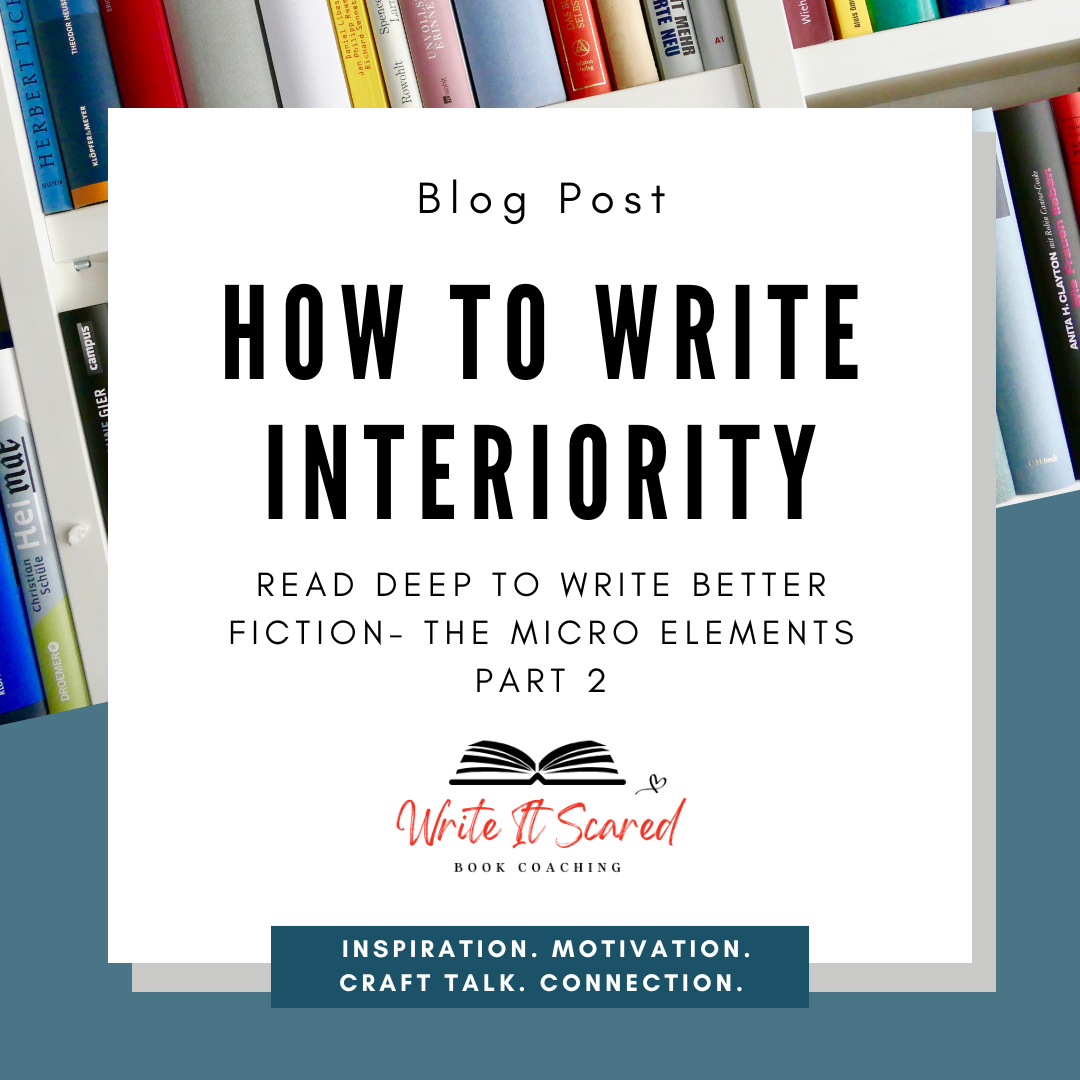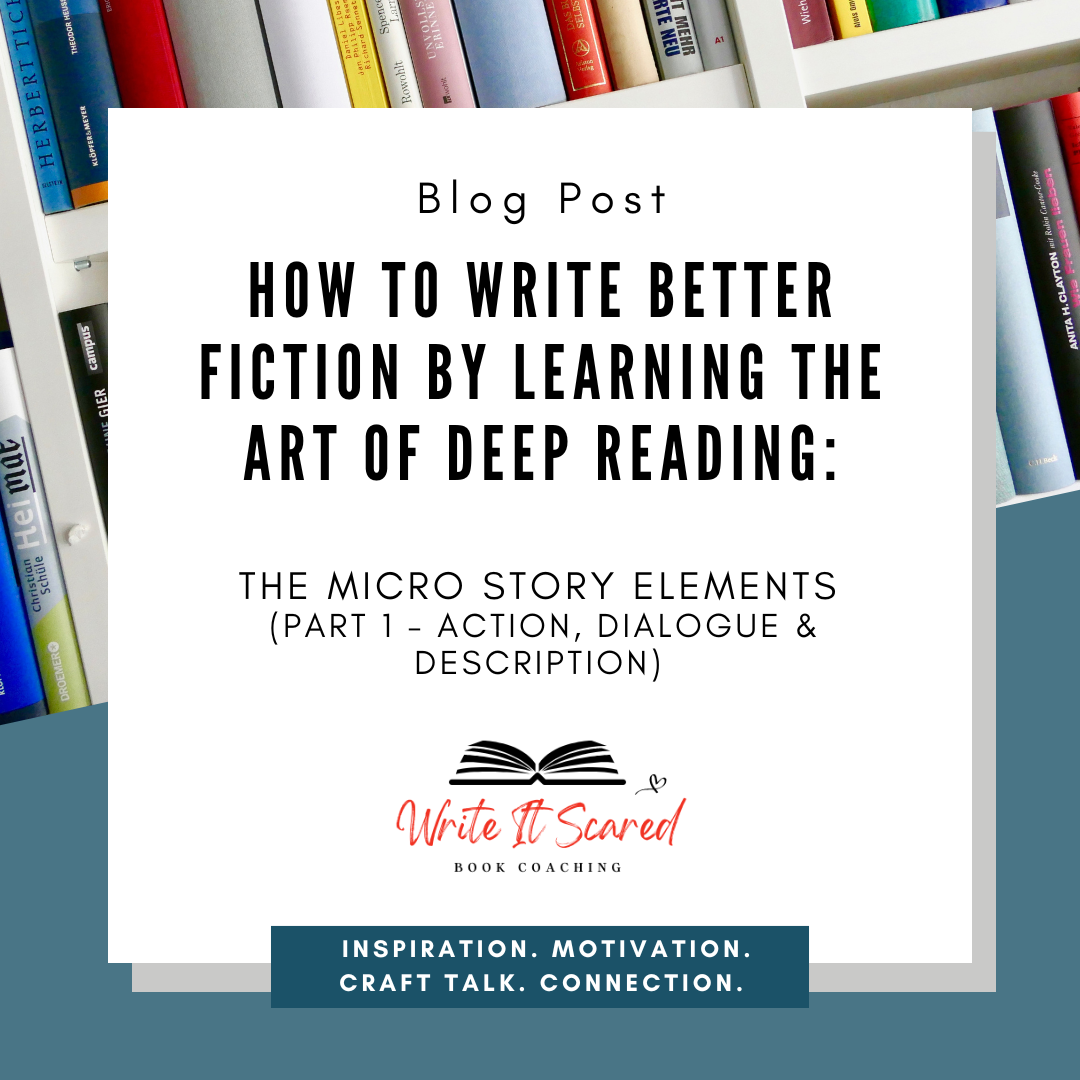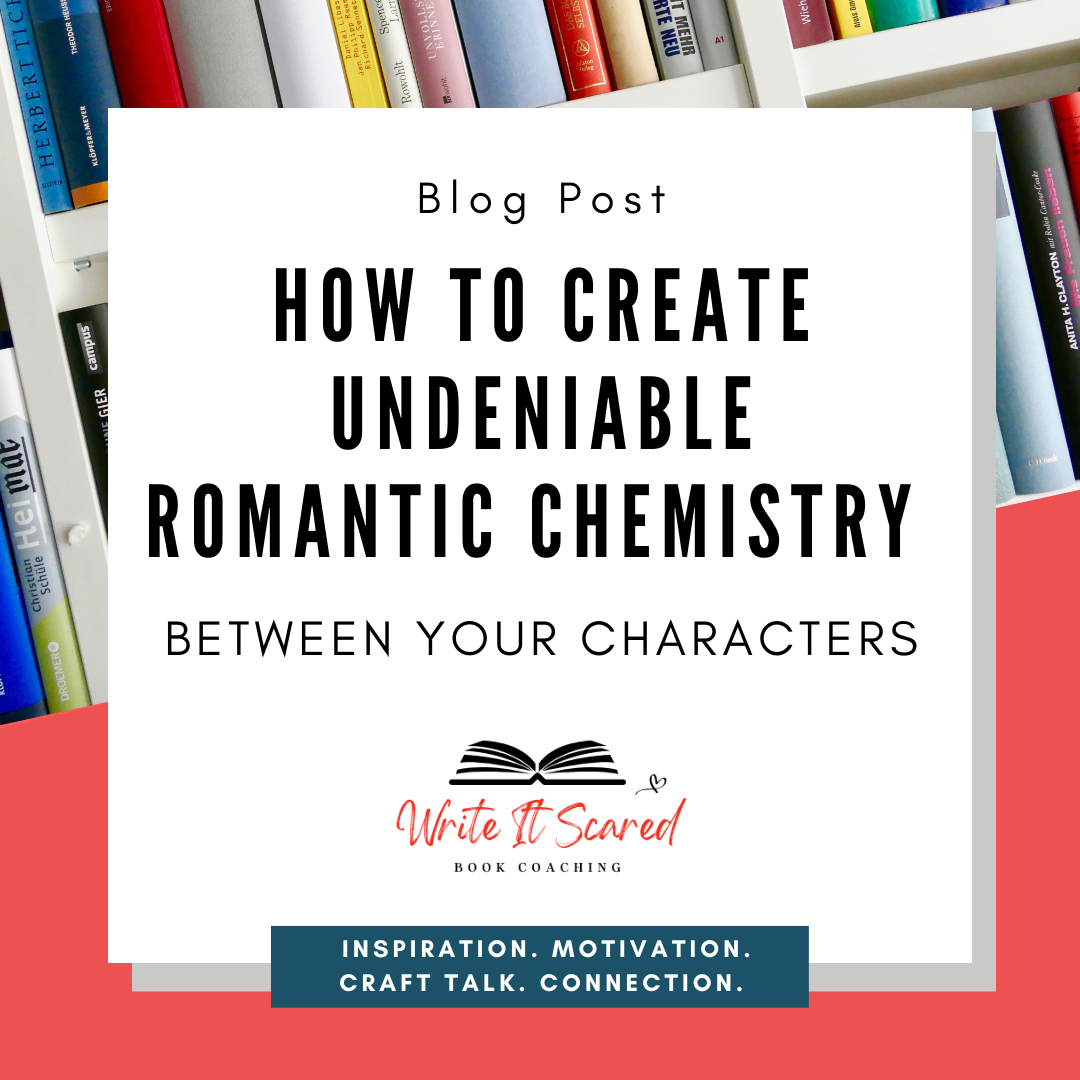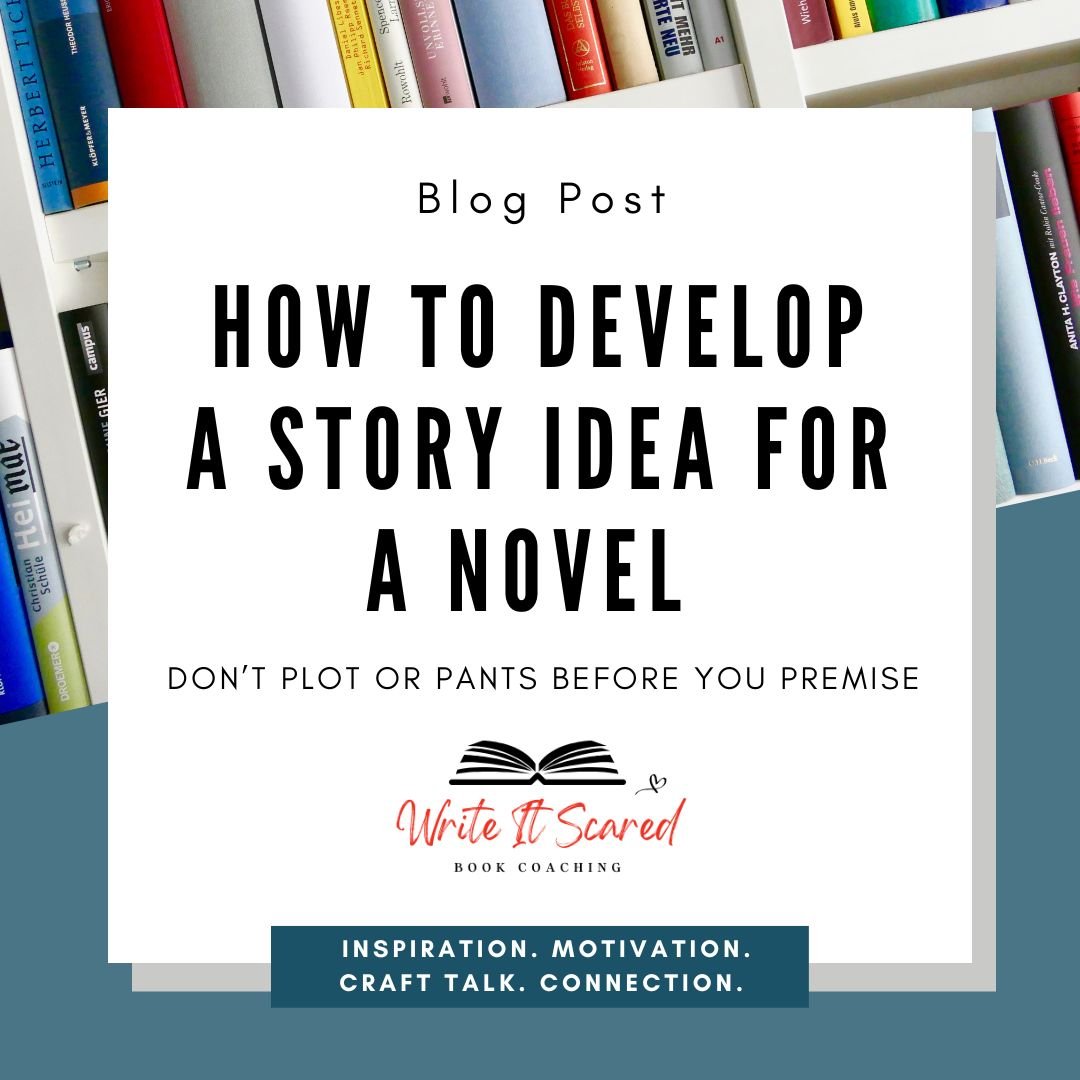
How to Trust the Process and Stick with Your Story with Author Kristin Offiler
What if the story you’re working on right now is the one, not because it’s perfect, but because you refuse to give up on it?
In this week’s episode of The Write It Scared Podcast, I had the absolute pleasure of sitting down with debut author Kristin Offiler to talk about the long, winding, messy, beautiful process of writing her psychological suspense novel The Housewarming — a story she started in 2018 and rewrote many times before it finally sold. And thank goodness she did, because it’s SO GOOD.

How To Craft a Compelling Backstory for Your Novel and Keep Track of It!
If you consider a story to be one large event that creates an irreversible change, then it must have a beginning to have an end. It must start from somewhere and be in a particular state to experience said change, and there must be a reason for that initial state of being.
That reason, my friend, is the backstory.
Crafting a compelling backstory is essential to creating realistic characters with motivations and complex problems the reader will relate to.

Peeling Back the Layers on Author, Narrator, and Character Voice to Write Better Fiction - The Micro Story Elements (Part 4)
Voice is one of the more ambiguous literary terms. When I started writing fiction, I had no clue what people meant when they referred to “voice.” Whose voice? The author’s, the characters’, or an unknown narrator?
It turns out we’re talking about all three, all at once, but here’s where it gets really confusing—everything stems from the author’s voice.

How to Write Character Thoughts: Read Deep to Write Better Fiction-The Micro Elements (Part 3)
Inner monologue are the thoughts the POV character thinks but doesn’t voice out loud. It’s their “inside voice.” This inside voice is key to allowing the reader into the story's experience. Without it, the reader will feel like a spectator, forced to watch something they don’t completely understand.

How to Craft a Credible Villain for Your Novel for Mystery, Suspense and Thriller Authors
We discuss the common challenges mystery, thriller and suspense writers face, including self-doubt, thinking the story is painfully boring and obvious, plus understanding genre expectations, and forming a compelling villain.

How to Write Interiority: Read Deep to Write Better Fiction-The Micro Story Elements (Part 2)
Interiority is looking directly inside the character's head and heart; from it, we understand their emotions, motivations, decision-making process, and psychological states, which can be very different from their actions on the page.

How To Write Better Fiction By Learning the Art of Deep Reading: The Micro Story Elements (Part 1)
In our last deep reading article we focused on the macro elements of fiction writing: Character, Plot, Conflict, Theme, Setting, Tone and POV Choice. Now we will turn our attention to the glue that holds those pieces together with the same intention—figuring out how they work so that we can craft better stories.

Crafting Complex Characters: Why Villains and Antagonists Matter
Antagonists will create obstacles for your protagonist to overcome. Depending on your intention, they can also highlight specific aspects of your main character and make them more or less relatable. The villain wants to hurt the protagonist — usually in the worst way possible and on purpose!

How to Write Suspense and Tension in Your Novel to Keep Readers Hooked
Suspense vs. tension: Why you can’t have one without the other, and if you have neither, you don’t have a story.

How to Create Undeniable Romantic Chemistry Between Your Characters
Romantic chemistry is that unspoken, elusive connection that you "know" when you see it, or rather when you feel it because it triggers a happy little soup of neurochemicals inside your body that scream more, more, more!

How to Structure a Romance Novel: Beyond the Beats
Today we’ll discuss how to outline a romance novel to hit the beats readers expect and talk about when and where those beats fall. But we’ll also look at character arcs, and themes because you really can’t talk about mapping a story without them!

Romance Writing Essentials: Tips for Writing Romance For Fiction Writers
Romance stories are among the most difficult to execute well. Why? There are many reasons, but the biggest is that structurally, the protagonist’s object of desire is also a major antagonistic force in the story. The love interest is the opposition! Wrangling that conundrum into a satisfying emotional experience takes some finesse, my friends.

Worldbuilding Tools - A Simplified Approach to Creative Worldbuilding for Fiction Writers
Worldbuilding is where writers create the social, cultural, historical, political, and physical realities for our characters.
It feels like a colossal endeavor that we could talk about for days, but we won’t. Today, we’re going to streamline the process by following our curiosity through a series of strategic questions.

How to Create Writing Habits that Stick: Applying Atomic Habits
We’re fifteen days into 2024, and I bet most of us are still feeling the freshness, motivation, and excitement of all the opportunities to come … but, sadly, experience teaches that motivation only lasts so long.
What really keeps us in the game is our habits.
Cultivating good writing habits in service of the changes we want to make and the people we want to become.
That’s the secret sauce. Here’s how to do it!

How to Develop a Story Idea For a Novel
Are you writing a novel this year? Maybe it’s your first time, and you’re wondering where to start. Or you’ve done this before, but you’re looking to nail down your process. Either way, this article will help.
Today, we’ll discuss how to explore a fresh idea and develop a firm foundation of the essential elements every story requires so that you can create a rock-solid premise statement for your novel.

How to Write Authentic Dialogue in Your Fiction Novel
When I started writing fiction, I really enjoyed writing dialogue—until I realized how terrible I was at it! And then, when I figured out what I was doing wrong, things got worse before they got better.

How to Handle Personal Experiences and Emotional Wounds in Your Writing
Today, we’re going to talk about an emotionally challenging topic that many writers face but is rarely discussed.
This topic has been on my heart in one way or another for the last month. What clinched my decision to talk about it here was when my client asked for guidance: “How do I write when the messy emotional parts of real life mimic what my characters are going through? When it feels too painful and raw, touch it?”

How To Write An Emotionally Satisfying Resolution For Your Fiction Novel
The end of the story has one seemingly simple job–to satisfy the reader. Let them say, ah, now that was worth it.
The key to a great resolution is to allow for emotional resonance between the story, the main character or characters, and the reader.
So how do we do that?
First, let’s remember where we’ve been to better understand where we’re going. And keep in mind that a story is about one thing: showing an irreversible change in the main character, the situation, or both.
The story’s resolution begins right after the last climactic event and continues to the final page.

How To Write A Gripping Climax For Your Fiction Novel
The climax is a series of connected scenes that take us to the last dramatic change (big moment), where the protagonist and the antagonist (bad guy, bad situation, bad internal flaw) go head-to-head. Someone wins, someone loses, and because of this, our character’s inner journey is completed. After that, there’s no more story to tell.
This is a big deal. It’s rubber meet the road time, and the story will live on in the reader’s mind as an epic success or a floppy failure based on this moment.
No pressure, right? Ha!

How To Write An Effective All Is Lost Moment And Dark Night Of The Soul
The All is Lost is an action beat played out in a single scene or chapter that lands right at the 75% mark of the novel. This event shatters all hope of the protagonist reaching their main external objective. It closes out Act III in Four-Act Story Structure. In Three Act Structure, it’s also called the Third Plot Point.
As the name suggests, the All is Lost moment is your main character’s rock bottom emotional low point. They were so close to getting what they wanted, but now, because of this event, there’s no chance in hell they’ll recover, or so it seems.
